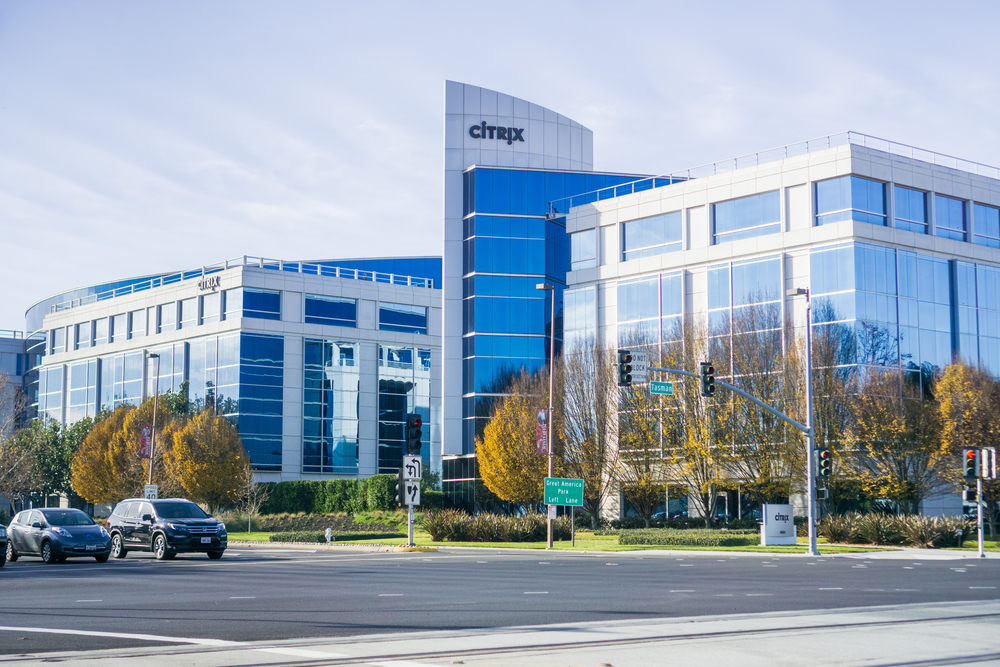Atlantis fuels Calor Gas VDI environment
Bottled gas supplier turns to Atlantis to optimise Citrix virtual desktop experience


Calor Gas has underpinned a virtualised desktop infrastructure (VDI) with hyperconverged infrastructure, in order to deal with bursts in activity.
The liquid petroleum gas supplier has 1,400 staff in 70 locations who rely on its IT systems, with the majority of those systems delivered through Citrix XenApp.
"Our use of XenApp goes back to the turn of the century, so we've been a longstanding Citrix customer," Andy Browne, infrastructure manager at Calor Gas, tells Cloud Pro.
The company initially turned to XenApp to avoid delivering a client server-based ERP application in a traditional PC and database set-up, then decided to simply deliver its entire desktop experience to users as VDI through the Citrix platform.
"It really has suited Calor's business and enabled us to have all of our compute power at the centre of the organisation - all the management benefits, where we've got a very small footprint now with our end users, who are mainly office workers," Browne says.
But when Calor started to hit the limits of its own storage capacity, it turned to infrastructure provider Atlantis Computing to improve the delivery of Citrix XenApp.
"We were starting to come to the maximum performance of our existing storage infrastructure and we wanted to boost the performance of our XenApp environment," explains Browne. "We implemented Atlantis's ILIO product ... which took that storage footprint and storage load off our existing storage platform and allowed us to isolate that and give a nice boost in performance."
Get the ITPro daily newsletter
Sign up today and you will receive a free copy of our Future Focus 2025 report - the leading guidance on AI, cybersecurity and other IT challenges as per 700+ senior executives
But when Calor decided to implement a full VDI with Citrix XenDesktop 18 months ago, it realised it needed more storage capacity to cope with bursts in traffic.
"We wanted to implement a storage infrastructure to support a virtual desktop implementation, as well as refreshing some of the hardware that was running our Citrix XenApp environment," Brown explains.
"We needed to increase our storage performance to cope with the bursty traffic that is typical in a VDI environment, but expanding our existing storage wasn't cost effective at all," he says.
Inititally the VDI project was parked as a result.
"We went out to market and looked at various solutions, such as upgrading our existing storage infrastructure to take into account that additional workload ... or building a solution ourselves using off-the-shelf technology, as well as some of the converged and hyperconverged environments that are out there," Brown adds.
Ultimately, Calor decided to use HyperScale, Atlantis's all-flash hyperconverged appliance, finding it provides the consistent performance a VDI environment needs.
It also deployed the vendor's USX software-defined storage (SDS) tool, which provides a data recovery (DR) capability.
"It's allowed us to start to build and build out our Citrix XenDesktop VDI platform," Browne explains. "We've done a POC [proof of concept] of that and a pilot, so now we're starting to upgrade that and deliver some new platforms out to our end users."
Some obstacles remain, however, including cloud, and whether it will play a part in Calor's VDI environment.
Browne says: "We're finding more and more that applications that we're looking to implement are only available as cloud-based applications or it's only practical for us to implement them as such."
"Ten years ago, even five years ago, we were implementing a lot more on-premise applications into our data centre," he adds. "We're now seeing a landscape where in the next three years, rather than our storage requirements and our performance requirements on-premise going up, there's a chance they might go down as technology such as modern CRMs and the use of Google Docs and Office 365 are coming into play."
"What we then want to be able to take advantage of is that compute and storage power in the cloud, so our big unknown is what's going to happen with desktop in that environment and whether we're going to see more use of cloud-desktop to meet Calor's business needs," Browne explains.
"We're not seeing a major driver for it at the moment, but in the next three-to-five years, as the rest of our estate floats off into the cloud, we're going to be left with how we deliver our desktop to our own users and whether that's something we continue to deliver ourselves, or whether we choose to take advantage of another technology."

Jane McCallion is Managing Editor of ITPro and ChannelPro, specializing in data centers, enterprise IT infrastructure, and cybersecurity. Before becoming Managing Editor, she held the role of Deputy Editor and, prior to that, Features Editor, managing a pool of freelance and internal writers, while continuing to specialize in enterprise IT infrastructure, and business strategy.
Prior to joining ITPro, Jane was a freelance business journalist writing as both Jane McCallion and Jane Bordenave for titles such as European CEO, World Finance, and Business Excellence Magazine.
-
 Cleo attack victim list grows as Hertz confirms customer data stolen
Cleo attack victim list grows as Hertz confirms customer data stolenNews Hertz has confirmed it suffered a data breach as a result of the Cleo zero-day vulnerability in late 2024, with the car rental giant warning that customer data was stolen.
By Ross Kelly
-
 Lateral moves in tech: Why leaders should support employee mobility
Lateral moves in tech: Why leaders should support employee mobilityIn-depth Encouraging staff to switch roles can have long-term benefits for skills in the tech sector
By Keri Allan